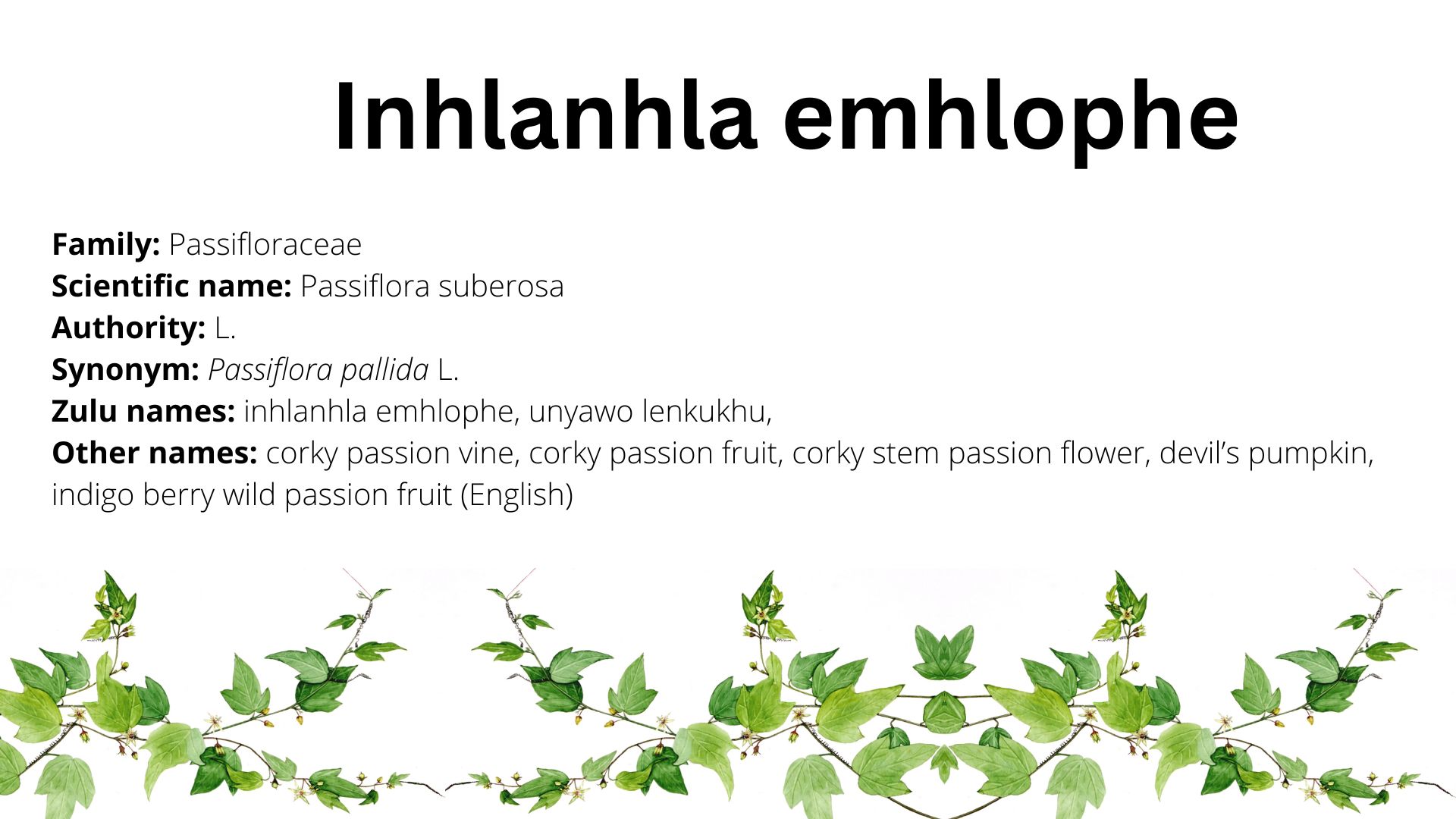Family: Passifloraceae
Scientific name: Passiflora suberosa
Authority: L.
Synonym: Passiflora pallida L.
Zulu names: inhlanhla emhlophe, unyawo lenkukhu,
Other names: corky passion vine, corky passion fruit, corky stem passion flower, devil’s pumpkin, indigo berry wild passion fruit,
Description: P. suberosa is a climbing herbaceous perennial producing slender stems that can become more or less woody and can reach up to 6 metres. It has three deeply lobed leaves, small greenish-white flowers with no petals, berry fruits that turn black when ripe, and a gelatinous stem that becomes corky when older.
Uses:
- The plant is used to make a tonic for vigour and strength.
- The leaves are used to make an infusion that is administered as an enema to treat lower back pains.
- The leaves are used to make a cold infusion that is administered as an enema and orally to relieve constipation and treat stomach cramps. A cold infusion of the leaves is used to treat stomach cramps including other stomach problems. The plant is used to relieve constipation and treat diarrhoea.
- This plant is used to treat skin ailments, such as body sores and ulcers. The leaves and stems are administered orally to treat ulcers.
- The leaves are used to treat neonatal illnesses.
- This plant is used to treat diabetes.
- The plant is used to treat hypertension.
- The plant is used to treat flu.
- The plant is taken as a sedative.
- The plant is used to bring back luck and ward off evil.
- The plant is mixed with other plants like umkhanyakude to bring good luck.
- The plant is used to strengthen the knees of a baby that is struggling to walk.
- The plant is cultivated as an ornamental.
Reference and further reading:
- Arnold, T.H., Prentice, C.A., Hawker, L.C., Snyman, E.E., Tomalin, M., Crouch, N.R. and Pottas-Bircher, C., 2002. Medicinal and magical plants of southern Africa: an annotated checklist. Strelitzia 13. National Botanical Institute, Pretoria.
- Mackenzie, C.G.M., 2009. Against evil: a comparative study of ancient Greek and contemporary Zulu protective magic (Doctoral dissertation).
- Mbongwa, N.S., 2018. The perceptions, attitudes and knowledge of traditional healers and traders about using cultivated plants in South Africa (Doctoral dissertation).
- Mhlongo, L.S. and Van Wyk, B.E., 2019. Zulu medicinal ethnobotany: New records from the Amandawe area of KwaZulu-Natal, South Africa. South African Journal of Botany, 122, pp.266-290.
- Scorza, R., 1979. In vitro flowering of Passiflora suberosa L (Doctoral dissertation, Purdue University).
- Sudasinghe, H.P. and Peiris, D.C., 2018. Hypoglycemic and hypolipidemic activity of aqueous leaf extract of Passiflora suberosa L. PeerJ, 6, p.e4389.
- Wojtasik, E.M., 2013. Richness and diversity of alien ethnomedicinal plant taxa used and sold for traditional medicine in South Africa (Doctoral dissertation, University of the Witwatersrand).
